Zora provides users with a user-friendly and almost barrier-free token issuance tool.
Written by: Umbrella, Deep Tide TechFlow
On September 15, 2025, Jesse Pollak, the founder of Base, announced that the team is exploring a native token for Base, sparking widespread attention and discussion in the crypto market.
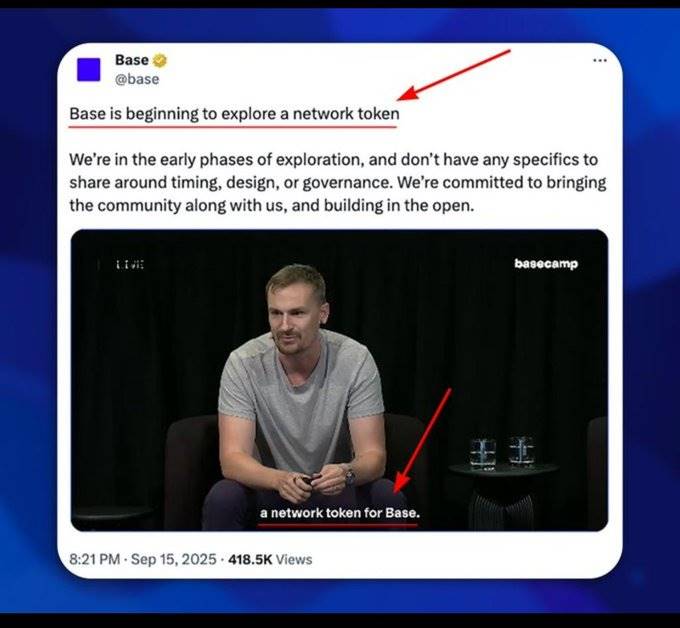
As the leading L2 under Coinbase, the largest cryptocurrency exchange in the United States, Base has a TVL of approximately $7.2 billion. With numerous SocialFi products in its ecosystem, it boasts nearly 700,000 daily active addresses on-chain, ranking first among all L2s.
This series of data has led the market to have high expectations for Base's token issuance. Additionally, the recent rebranding of Coinbase Wallet to Base App, along with significant updates to the product that introduced social and payment features, seems to indicate that the native token for Base is on the horizon.
Related reading: “From Coinbase Wallet to Base App: Understanding the Opportunities and Transformations of Web3 Super Applications”
The current market believes that Base is likely to complete its TGE in Q4 of this year and may distribute airdrop shares based on interaction records from leading projects within the Base ecosystem.
Such speculation has made leading applications within the Base ecosystem scarce assets, with many users turning their attention to Zora.
As a leading application within the Base ecosystem, Zora has performed exceptionally well over the past month and announced on October 14 that it will soon launch a live streaming feature on the platform, seemingly preparing for the upcoming "big" event.
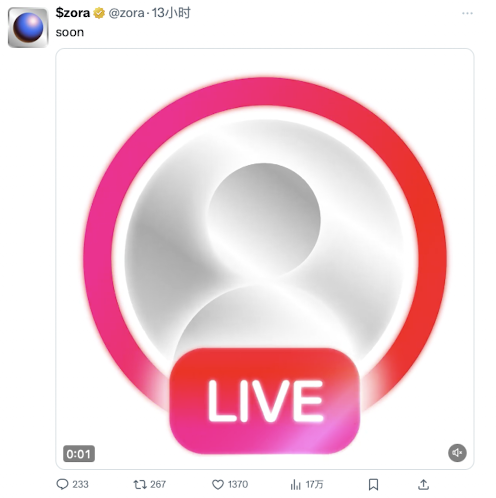
The "content equals token" narrative of traditional crypto creator economy platforms has gradually lost its novelty for meme players. Compared to text and images, live streaming can provide viewers with richer content and FOMO emotions on various levels. It is foreseeable that a large number of "talented" creators will use Zora's live streaming feature to launch more narratively appealing memes.
Zora: From NFT Platform to Creator Economy Infrastructure
Founded in 2020, Zora received support from Coinbase's venture capital fund during its initial launch, raising a total of $60 million through three rounds of financing.
Zora launched at a time when the NFT narrative was booming. As the NFT platform within the Base ecosystem, Zora occupies over 50% of the NFT market share on Base. Until this year, Zora has transformed from an NFT platform to a popular content platform within the Base ecosystem, establishing a natural advantage in the distribution of Base tokens.
In April 2025, the $Zora token was issued, with a total supply of 10 billion tokens, of which 50% was allocated to the community. At that time, the market was busy chasing various memes on Solana, and not much attention was paid to Zora.
A turning point occurred in July when Zora made significant updates, enabling large-scale issuance of creator tokens and meme coins through integration with Base, officially transitioning from an NFT trading platform to a popular meme launching platform, quickly becoming the hottest application within the Base ecosystem.
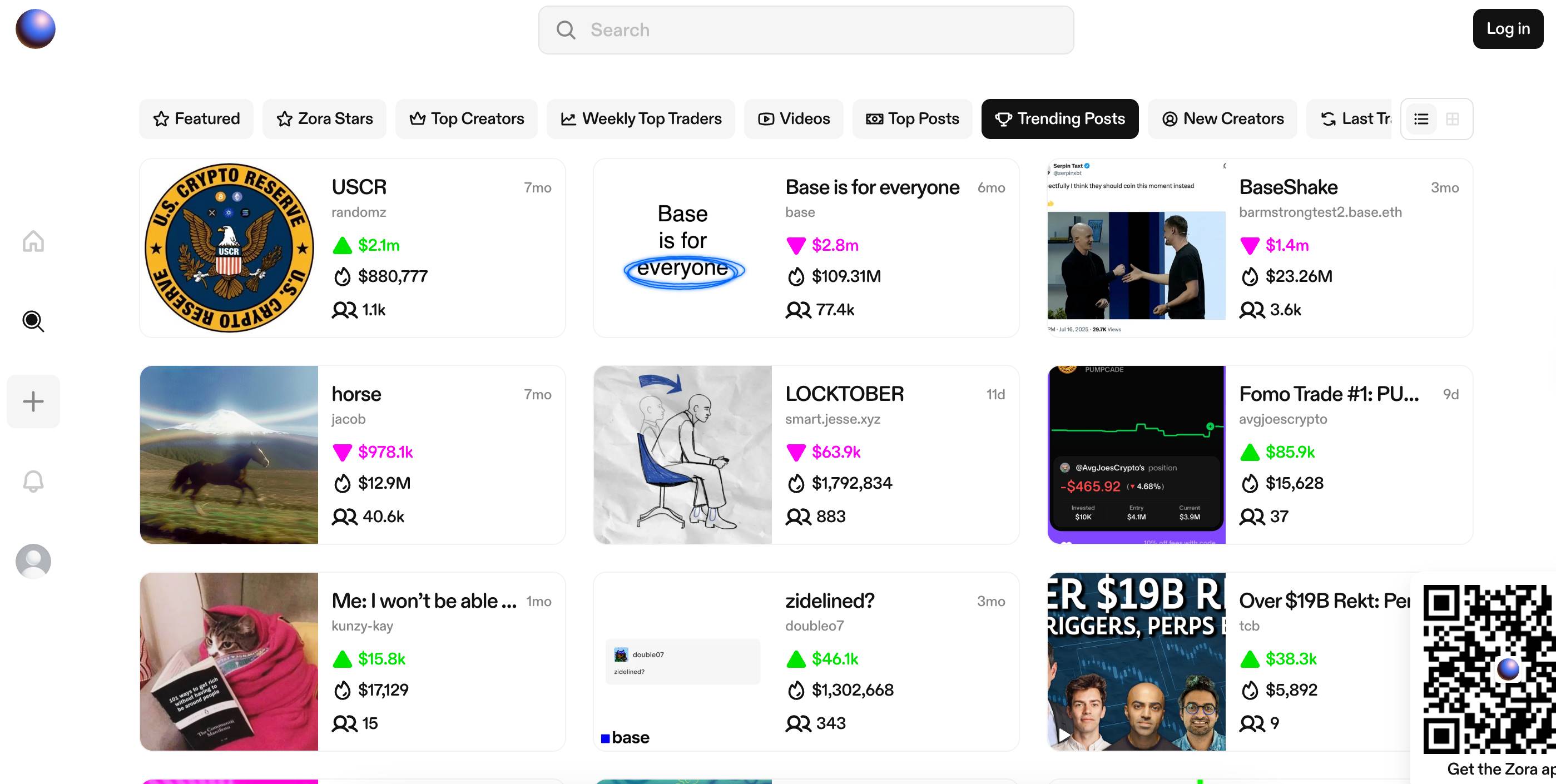
Compared to established products like Pump.Fun, the later entrant Zora has learned from many "predecessors" and implemented numerous innovative mechanisms.
In terms of token types, Zora not only has tokens corresponding to content but also introduced a "creator coin" for each creator, with each user profile corresponding to one, allowing creators to earn additional rewards recognized by the market through providing quality content on this platform.
The core innovation lies in the design of Zora's revenue distribution model. The trading fee for tokens on the Zora platform has decreased from an early 3% to 1%, with 50% paid directly to creators, 20% permanently locked to increase the depth of the trading pool, 20% rewarded to developers/platforms that recommend creators to deploy tokens, 4% as rewards for specific trading addresses, and 5% entering the platform treasury.
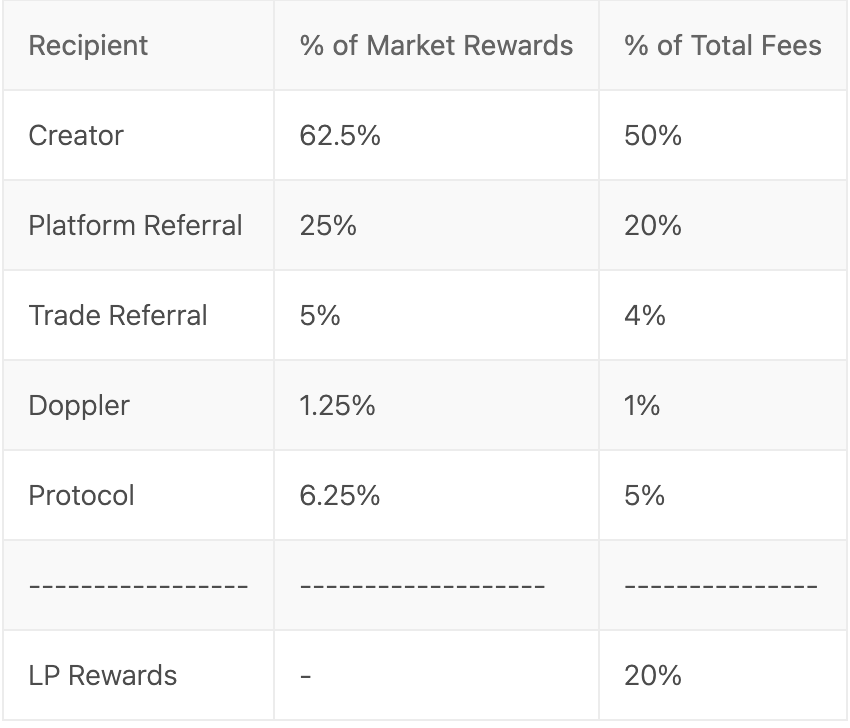
Moreover, this distribution mechanism is closely related to its platform token $Zora, as all rewards will be paid in $Zora tokens, and all income entering the platform treasury will support the price through market buybacks.
Overall, Zora provides users with a user-friendly and almost barrier-free token issuance tool, allowing any content creator to deploy tokens with one click, and creators can earn continuous income from secondary market transactions rather than one-time profits from sales.
According to data, Zora generated over $460 million in trading volume in July, nearly ten times its historical total trading volume for NFTs. It issued over 1.6 million creator tokens, surpassing competitors like Pump.Fun during the same period, becoming one of the most active meme issuance platforms in the Base ecosystem.
The most direct manifestation of this transformation is reflected in the price of $Zora. According to Coingecko data, this transformation caused the price of $Zora to rise rapidly from $0.012 to around $0.09 in just ten days, achieving an increase of nearly 800%.
Recent Performance and Analysis
In the past month, Zora has demonstrated strong competitiveness in both price resilience and product iteration.
After the price increase in July and August, as the narrative of the creator economy gradually cooled and the crypto market experienced a downturn in September, the price of $Zora also fell back to around $0.05.
On October 10, Zora announced its launch on Robinhood, becoming the first Base ecosystem token to go live on Robinhood. On the day of the launch, the price of $Zora surged approximately 70% from $0.05 to $0.085, with a 24-hour trading volume skyrocketing about 780% to $569 million, bringing significant liquidity improvements to $Zora. On the other hand, the launch on Robinhood also signifies mainstream market recognition of Zora's value and attention to the development of the Base ecosystem.
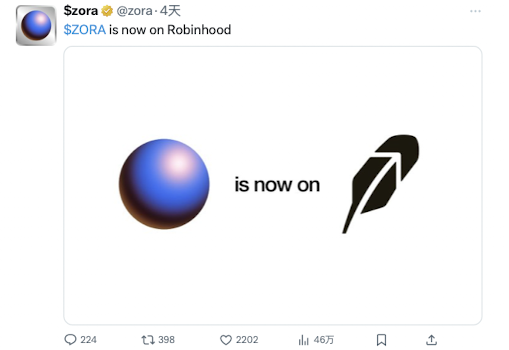
Additionally, during the period from September to October, the holding structure of $Zora has also changed significantly. On-chain data shows that in the past 30 days, a large number of whales have entered to build positions or increase their holdings of $Zora, especially during the overall market downturn in September, where large holders continued to buy against the trend. This change in holding structure seems to indicate that Zora's long-term value is being recognized at an institutional level.

Following the launch on Robinhood, the announcement by Trump on October 11 to raise tariffs on China created a black swan event, further drawing market attention to $Zora during this historically significant event in the crypto market.
Data shows that on October 11, the price of $Zora briefly dropped from a high of $0.12 to $0.05, but unlike most assets that struggled to rebound, $Zora took just one day to return to around $0.1, with a single-day increase of nearly 50%, becoming one of the few assets to complete "post-disaster reconstruction" quickly.
The strong resilience displayed by $Zora during this black swan event has led many investors in the market to add it to their watchlists. On October 15, the price of $Zora again showed strong resilience, returning from $0.08 to around $0.1.
From an ecosystem perspective, Zora currently almost monopolizes the creator economy track within Base. Over 90% of meme coins in the Base ecosystem come from Zora, and such impressive data provides strong support for market speculation regarding Zora's share weight in the distribution of Base tokens.
Also in October, Zora announced a reduction in trading fees from 3% to 1%, with 50% of the revenue returned directly to creators. While this profit-sharing behavior may impact protocol revenue in the short term, it is beneficial for more users to participate and for future expansion in the long run. Moreover, the pattern it exhibits also enhances Zora's appeal to the general public.
Recently, the Zora platform has also shown clear strategic acceleration. On October 14, Zora announced via official Twitter that it will soon launch a live streaming feature, which inevitably brings to mind the live streaming feature recently launched by Pump.Fun, which led to numerous viral events and meme coins in a short period.
Although Zora has not yet updated the detailed introduction of this live streaming feature, based on the current mechanism of content tokens on the Zora platform, we can predict the potential impact of the live streaming launch on $Zora.
For example, users could consume $Zora to give instant rewards to streamers, and streamers could use $Zora to mint NFTs for their fan groups as identity markers for their fans. Additionally, it may also develop into a scenario where users consume $Zora to unlock high-quality paid live streaming rooms and privileges.
All these possibilities will provide clear upward momentum for $Zora, showcasing a model that is more aligned with long-term development and the price of the $Zora token compared to Pump.Fun.
Potential Risks
Although Zora has many favorable factors and information, the risks behind its growth cannot be ignored.
The most significant issue is the lack of liquidity for most creator tokens on the Zora platform. Currently, CoinGecko only tracks 9 tokens with meaningful market capitalization, with a total market cap of only $18 million. In comparison, popular launching platforms on BSC and SOL often have meme coins with market caps in the tens of millions, indicating that Zora still has considerable room to catch up.
Furthermore, if recent market volatility leads to a cooling of market sentiment, it could likely trigger widespread liquidity exhaustion.
A more direct investment risk lies in token unlocking. On October 30, 160 million Zora tokens will be unlocked, accounting for 4.55% of the total supply, which may create significant selling pressure in the short term.
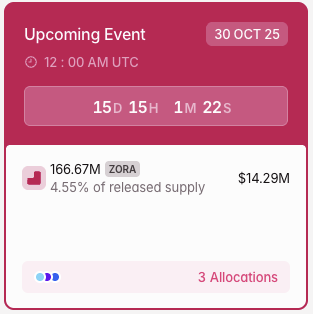
On the other hand, the upcoming live streaming feature may also be a double-edged sword. Pump.Fun is the best example; although the live streaming feature attracted a large number of meme players with popular tokens like $BUN and $BackWork at the time, it later led to more market controversies due to poor content management, and the collective trend of popular tokens going to zero resulted in significant losses for many investors.
However, unlike Pump.Fun's consistently "wild" development path and inexperienced young team, Zora is backed by the more mature and "steady" Base ecosystem, and its demonstrated operational capabilities have alleviated similar concerns to some extent. Currently, the Zora platform has a user base of over 2.9 million, providing ample resources for the promotion of the live streaming feature. Perhaps this time, Zora can bring us a new answer combining crypto and live streaming.
Seizing the Window of Base Token Issuance Expectations
Zora provides a clear path for participating in the expected Base token airdrop. Its core position in the Base ecosystem, strong growth data, and demonstrated price resilience all indicate that this is a project worth paying attention to.
The current $850 million FDV still has reasonable upside potential relative to Zora's ecological position and growth potential. Especially under the catalyst of Base token expectations, its value as a leading application in the ecosystem may be further amplified.
However, the high uncertainty in the market in the short term and the upcoming large unlocks also pose resistance for $Zora. Investors can monitor recent market changes and price performance after the unlock to decide whether to add $Zora to their investment list.
The expectation for Base token issuance is gradually approaching. In the context of intensified competition among L2s, the launch of a native token by Base is almost an inevitable choice, and Zora's position in this regard is a project that cannot be overlooked for those seeking to capture the Base airdrop.
The opportunity is right in front of us; the key is whether one can accurately grasp the timing and rhythm.
免责声明:本文章仅代表作者个人观点,不代表本平台的立场和观点。本文章仅供信息分享,不构成对任何人的任何投资建议。用户与作者之间的任何争议,与本平台无关。如网页中刊载的文章或图片涉及侵权,请提供相关的权利证明和身份证明发送邮件到support@aicoin.com,本平台相关工作人员将会进行核查。




